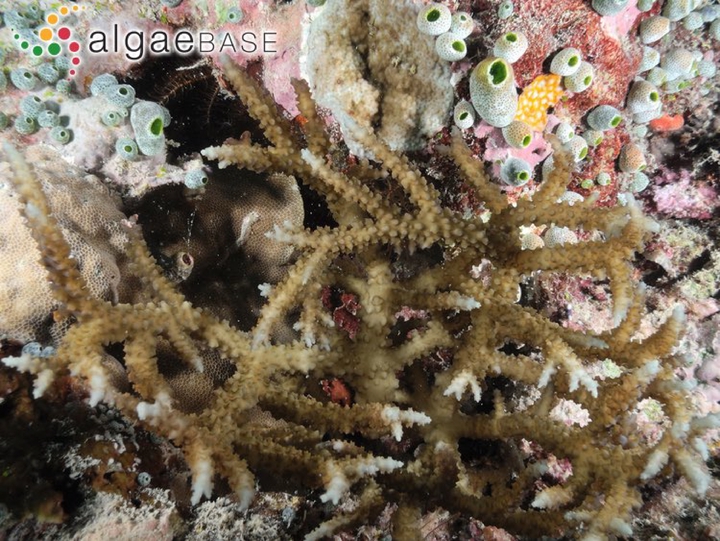Establishment of Mimica gen. nov. to accommodate the anaxiferous species of the economically important red seaweed Eucheuma (Solieriaceae, Rhodophyta)
 Image credit: Photo courtesy of Dr. John M. Huisman
Image credit: Photo courtesy of Dr. John M. Huisman
Abstract
The taxonomy of the genus Eucheuma J. Agardh (1847) has long been considered as among the most challenging of commercially and economically important red seaweeds as it exhibits extreme polymorphism and highly plastic morphologies (Ganzon-Fortes et al. 2012). Efforts to clarify the taxonomy of these seaweeds were prompted by the development of a culture technology to support the growing demand for the carrageenans that they produce. Significant changes in the taxonomy and classification of eucheumatoid species were ushered in by the works of Doty & Norris (1985), who initiated discussion on the need to consistently identify the different species of Eucheuma, considering their practical importance for seaweed farmers, traders, and processors. At that time, only the genus Eucheuma was recognized, but distinct character differences had already been noted including their morphologies, anatomies (e.g., nature and arrangement of medullary cells), and carrageenan type, among others. Based on these attributes, Doty & Norris (1985) recognized four sections in Eucheuma: Eucheuma, Anaxiferae, Gelatiformia, and Cottoniformia. They explained that Weber-van Bosse (1928) was the first to use the term “Anaxiferae” in Eucheuma, when she recognized two sections, Axifera and Anaxifera. The latter was characterized by having fronds without a central axis, or core, of elongated cells, and the central region is composed of quite large cylindrical cells and more or less surrounded by “thylles”. The latter is defined as bubble-like outgrowths that develop from large inner primary medullary cells, somewhat similar to tyloses in flowering plants (Doty & Norris 1985). Weber-van Bosse (1928) included a total of 14 species in her section Anaxiferae, including eight that were newly described. She did not designate a type species for that section. Doty & Norris (1985) accepted Weber-van Bosse’s section Anaxiferae but with a significantly emended circumscription, defining it as thalli with the presence of whorls of spines on both the determinate and indeterminate branches and by the presence of mostly iota-carrageenan as the gel-wall matrix material. Also, axial hyphae or rhizoids are absent, and “thylles” are abundant and scattered in the medulla. Doty & Norris (1985) designated Eucheuma arnoldii Weber-van Bosse as the lectotype of the section.